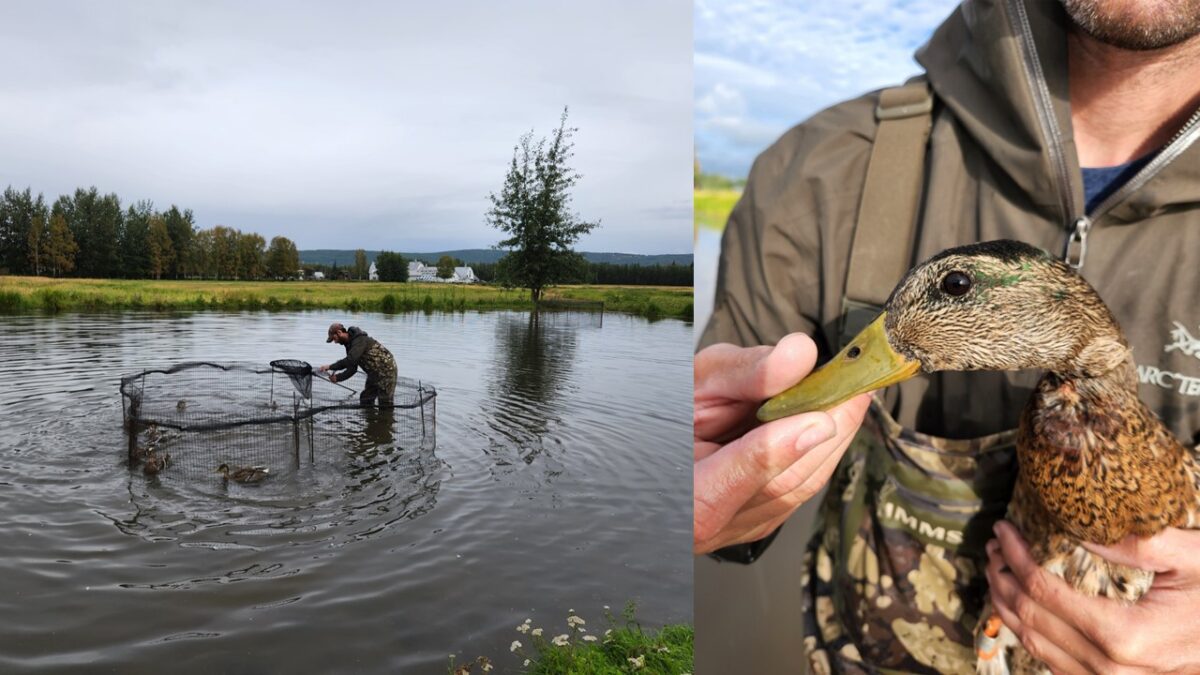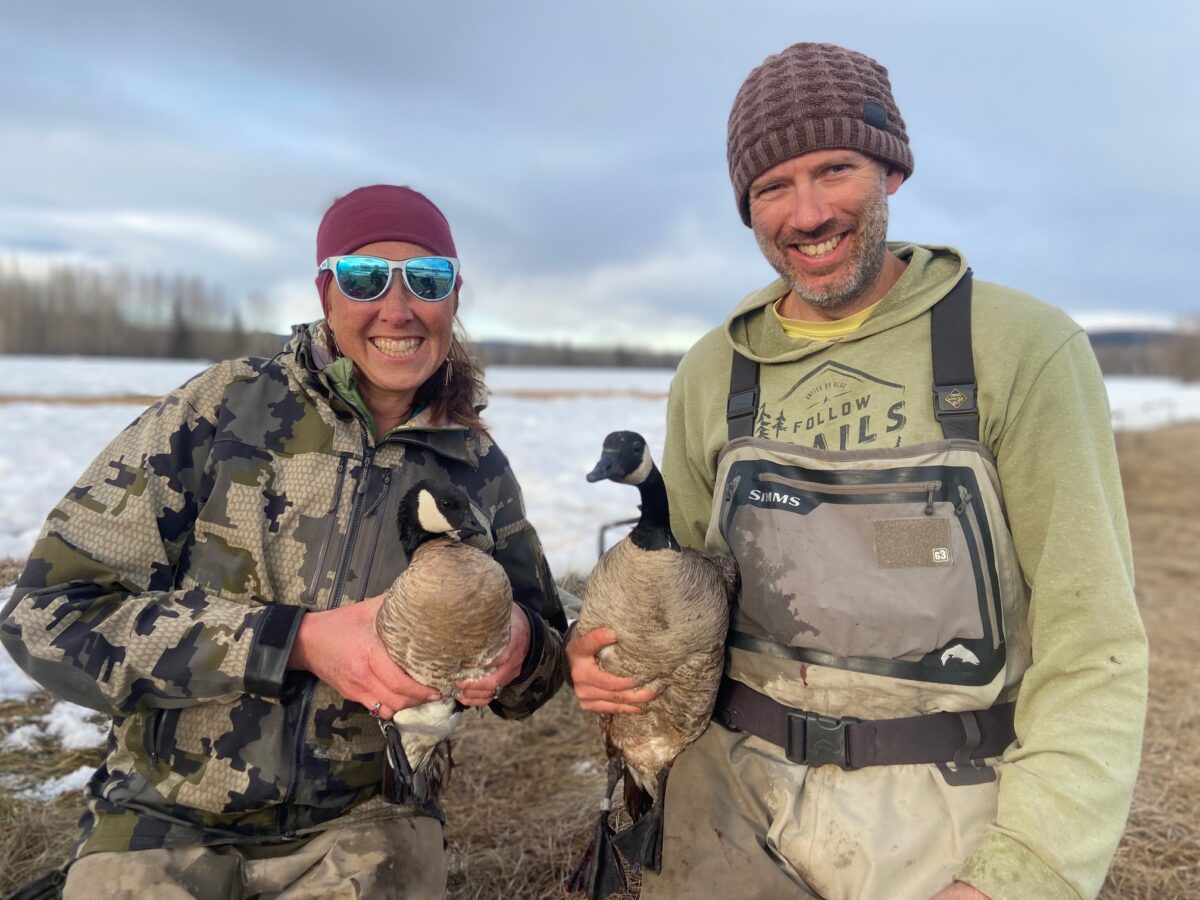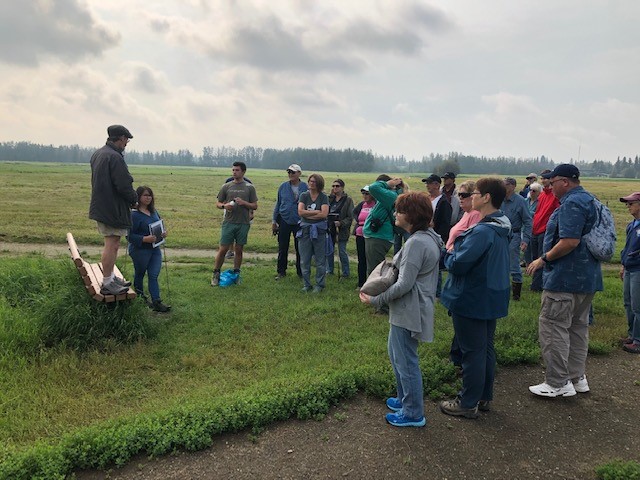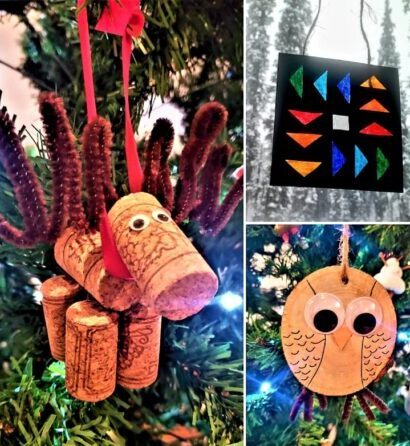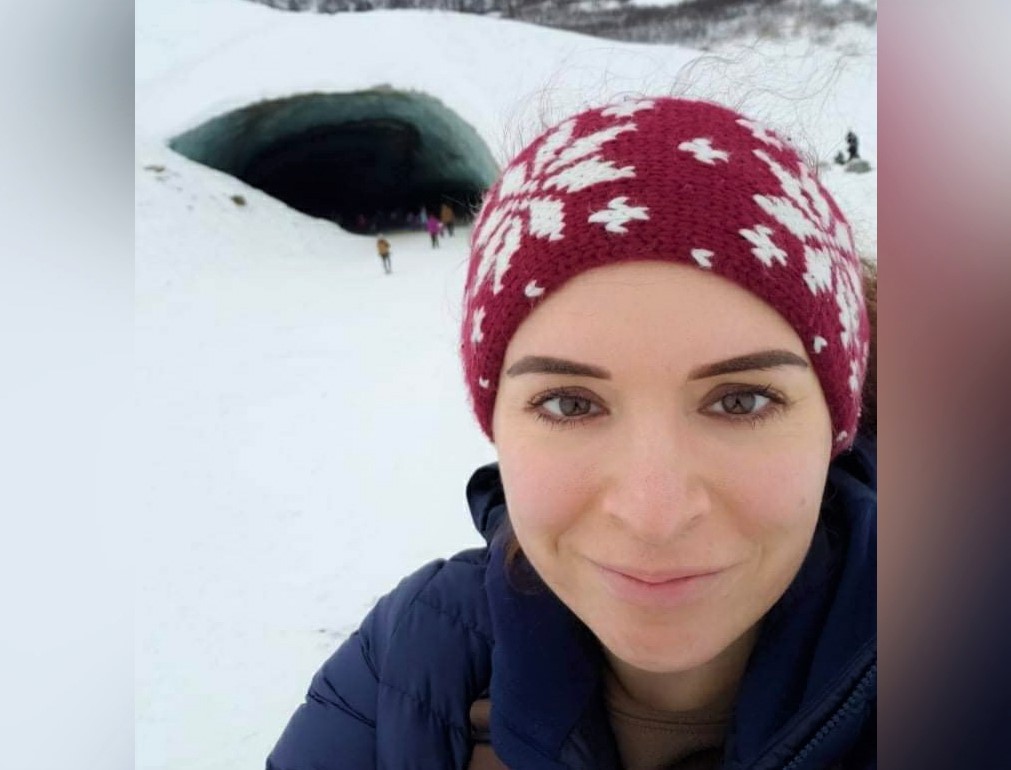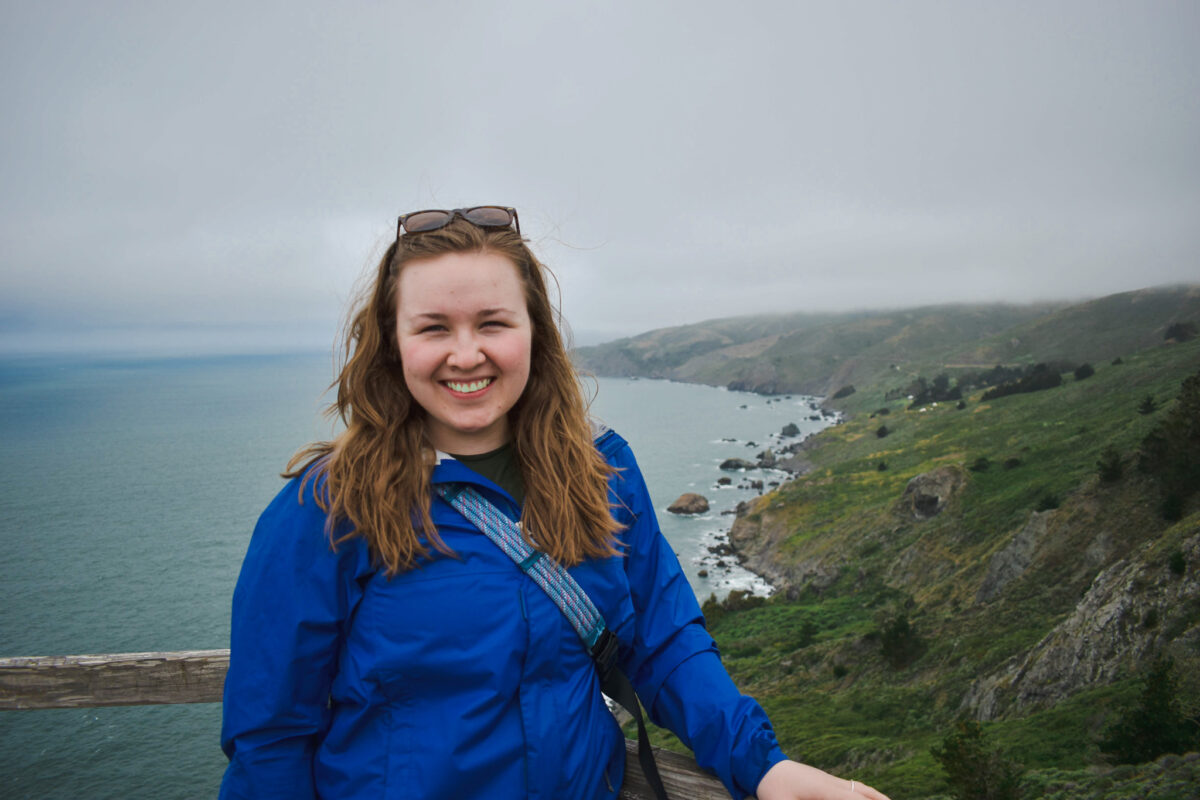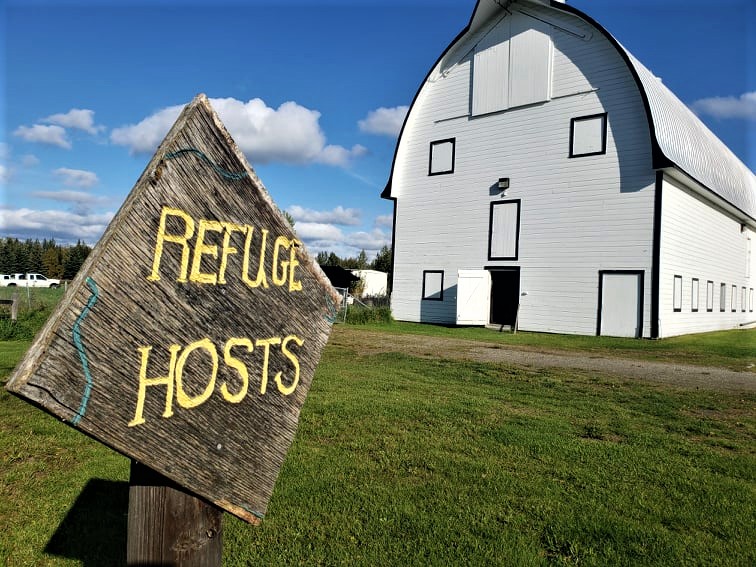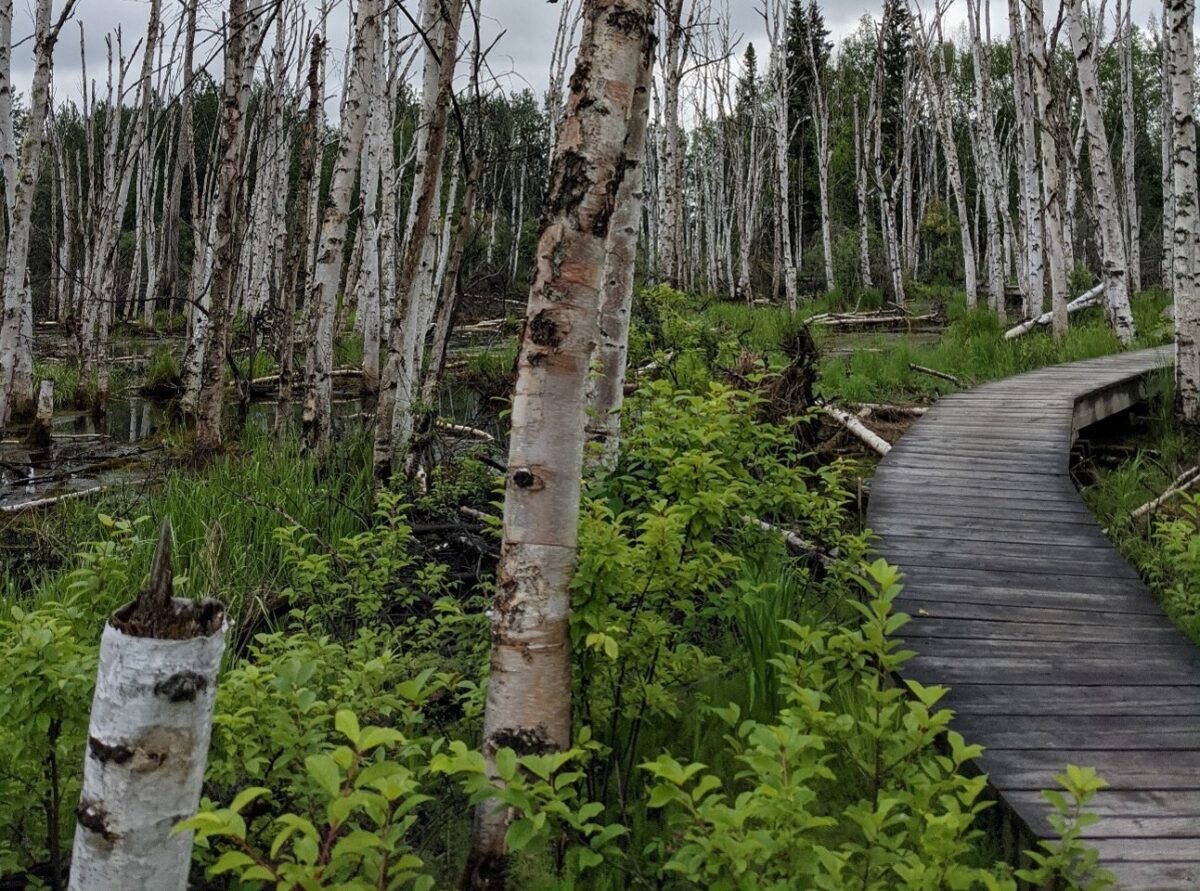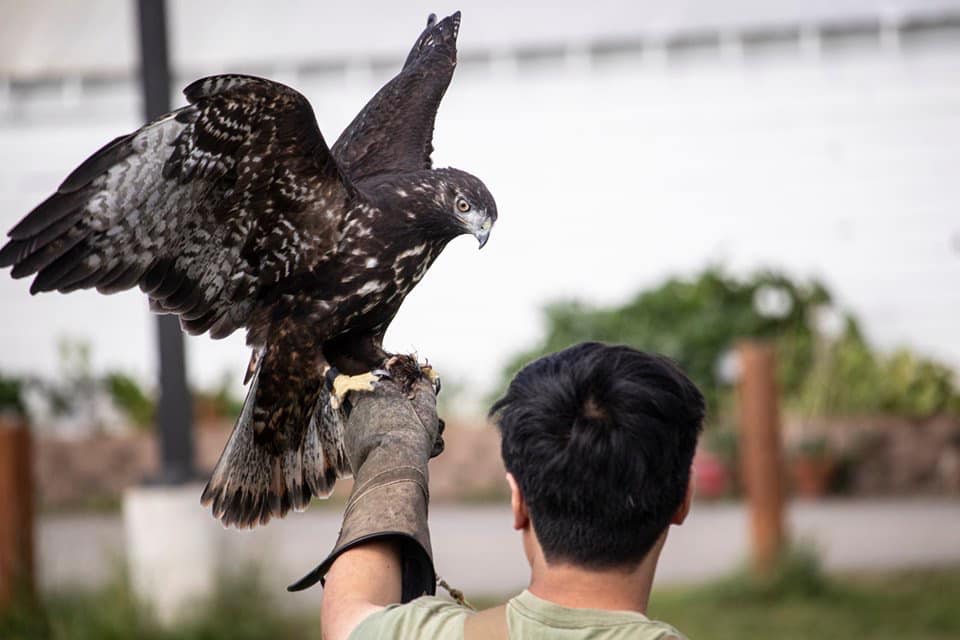Waterfowl banding occurs all throughout North America and is a useful tool in the monitoring of waterfowl species. As fall migration was getting underway, the Alaska Department of Fish and Game (ADF&G) conducted waterfowl banding throughout Alaska with a statewide goal of banding 6,000 Mallard ducks. Typically, the Interior banding effort is performed at a banding station on Big Minto Lake. However, due to high water levels, wildfires in the Interior, and equipment availability, the 2022 fall banding operation occurred at Creamer’s Field Migratory Waterfowl Refuge. The operation at the refuge was headed by ADF&G Wildlife Technician, Nate LaShomb, along with other banders and volunteers from ADF&G, the U.S. Fish & Wildlife Service, and the University of Alaska Fairbanks. The ducks were captured using a swim-in trap technique (right photo). This involves a baited trap that acts much like a crab pot in which the birds were allowed to enter the trap via an opening but are unable to leave …
Three Decades of Camp Habitat at Creamer’s Field
Popular children’s nature camp hits three-decade milestone! Photos of Camp Habitat at Creamer’s Field in the 1990s. On July 23, current and former Camp Habitat collaborators and alumni celebrated its 30-year anniversary of operation at Creamer’s Field Migratory Waterfowl Refuge. They commemorated the celebration with nature walks, camp songs, and reminiscing on previous years of camp. The inception of this dream for a nature-based summer camp for kids began and was conceptualized by Susan Grace Stoltz, a local environmental educator. That dream became a reality in the summer of 1992 when she launched Camp Habitat! In the decades since, Camp Habitat is a much sought-after summer program and has reached over 5,000 kids teaching them about the importance of nature and their place in it! The staff and campers exploring the fields and boreal forest in the 1990s. The last time Camp Habitat operated at the refuge was the summer of 2019, and even that session was marred by a …
Waterfowl Research at the Refuge: Spring Migration
By Michael Guttery and Tasha DiMarzio, Alaska Department of Fish and Game Waterfowl Program Over the last few months, the Alaska Department of Fish and Game (ADF&G) Statewide Waterfowl Program staff have been developing a research project focusing on white-cheeked geese. According to the National Audubon Society, the white-cheeked geese of North America were long considered a variable species of Canada Geese. It was not until 2004 that four of the smallest forms (Richardson’s, Aleutian, Taverner’s, and Minima) were recognized as their own distinct species known as Cackling Geese. The seven species of Canada Geese are the Atlantic, Interior, Giant, Moffitt’s, Dusky, Vancouver, and Lesser. In this research project, ADF&G is focusing on Lesser Canada Geese (Branta canadensis parvipes) and Taverner’s Cackling Geese (B. hutchinsii taverneri). These two species of geese are common in Alaska, though relatively little is known about them. In the late 1990’s, a University of Alaska Fairbanks graduate student, Dr. Michael Eichholz, conducted research aimed at mapping …
DIY Creamer’s Field Ornament Crafts for the Holidays!
In this season of gratitude, we thank you all for supporting us through this interesting year! While we are unable to gather in person for ornament crafting with our amazing volunteers, we wanted to share some awesome ornament crafts inspired by the art and wildlife at Creamer’s Field. We have compiled three easy ornament crafts that the whole family can create together with the right materials, supervision, and creativity! The first craft is the Cork Moose Ornament! While walking along one of the nature trails, visitors may spot moose meandering through the boreal forest on the refuge. Known as moose across North America, Alces alces is the largest member of the deer family. Adult moose can range in size from 800 pounds (small adult female) to1,600 pounds (large adult male), and they can be up to almost 6 feet tall. Moose can range in color from golden brown to almost black, depending on the season and the age of the …
Meet the Programs & Events Coordinator: Melanie Graeff
Melanie joined the Friends of Creamer’s Field family back in March 2020. She has since been involved in creating outreach content for in-person and virtual programs, along with content for our website and social media accounts. Melanie was raised near Dayton, OH. She grew up playing soccer and spending time outside. She was recruited to play at the collegiate level at Capital University in Columbus. During her studies, she expanded her interests to include environmental science. After marrying husband Nate, she moved west to Olympia, WA to pursue a graduate degree. Her studies encompassed utilizing Geographic Information Systems (GIS) technology for mapping the Earth, science education, program outreach, climate science, and natural resources management. Her favorite outdoor passions include kayaking, hiking, birding, trail running, fishing, and wildlife photography. After earning her Master’s, she had an opportunity to work as an AmeriCorps member alongside the U.S. Fish & Wildlife Service to facilitate shorebird education and outreach at several wildlife refuges in …
Meet the Executive Director: Grace Nelson
Grace Nelson has joined the Friends of Creamer’s Field family as the executive director, effective September 1, 2021. Grace hails from Lancaster, PA, but now calls Fairbanks home. Her love of nature and keen interest in environmental stewardship and conservation inspired her to earn a Bachelor of Science at the University of Alaska Fairbanks in Natural Resource Management with a focus on agriculture and education. While at UAF Grace formed a strong connection with and a deep love for the Fairbanks community. After graduation, she worked as a Fish & Wildlife Technician for the Alaska Department of Fish and Game, division of wildlife conservation. Most recently, she worked with the Salcha-Delta Soil and Water Conservation District as an agriculture technician, managing a cover crop variety trial. In her free time, Grace enjoys exploring Alaska, hiking, fishing, and photography. She is also the volunteer director of the Alaska Youth Hunter Education Challenge, a youth event promoting safe and ethical hunting. …
Refuge Hosts at Creamer’s Field
Throughout the year, Creamer’s Field Migratory Waterfowl Refuge hosts many resident and migratory birds, mammals, insects, students, scientists, and visitors. On a visit to the refuge, you might have passed the “Refuge Host” sign by the large dairy barn and probably asked: why would this refuge need a host? The farmhouse was renovated in the 1990s to serve as a visitor’s center for the refuge. To ensure that the Farmhouse Visitor’s Center was fully staffed to accommodate visitors, the Refuge Hosting program was set up in 1998. Refuge Hosts serve as volunteers for the Division of Wildlife Conservation of the Alaska Department of Fish and Game. The summer season lasts from May 15 – September 15 and that period is split into three duty periods. Throughout their duty period, volunteering Refuge Hosts stay on site at the RV hook-up area. They provide essential services at and around the 12-acre historic buildings area. Refuge hosts staff the visitor’s center on the …
European Bird Cherry (Prunus padus) and Chokecherry (Prunus virginiana) tree distribution and abundance at Creamer’s Field Migratory Waterfowl Refuge
By Hazel K. Berrios, Natural Resource Technician, and Limor Dubrovsky, Natural Resource Intern, Fairbanks Soil & Water Conservation District Prunus padus and Prunus virginiana (hereafter referred to as Prunus spp.), commonly known as European Bird Cherry and Chokecherry, are native to Northern Europe and across Asia; so how did they get all the way over to Alaska? Both Prunus spp were introduced around 1959 in Alaska by the Alaska agricultural experiment station in Palmer, as an effort to increase tree fruit culture in Alaska. Since then, both Prunus spp. have become common ornamental trees that are planted in residential areas and in public parks. The first collection and record of chokecherry spreading into natural areas was documented by Welsh in 1968 in Palmer. A year later it was documented in the surroundings areas of UAF. Since escaping cultivation, it has spread into native riparian habitats as well as intact forests in the Anchorage, Mat-Su, Kenai, Southeast and Fairbanks areas. Currently, …
Falconry: A Living Human Heritage found at Creamer’s Field
Nobody can truly say when the first ‘falconer’ came to be; developing the idea of harnessing a bird of prey’s natural beauty and power for their own purpose. From what history has unfolded, falconry may have manifested itself sometime during 1300 BC in the plains of Central Asia. For much of human history, this ‘sport of kings’ was a symbol and key emblem of social standing, wealth, and power. Although, falconry is practiced on a much smaller scale today, it still holds reverence to some of its major premises – the training a birds of prey to hunt for quarry within their natural habitat. A major component of falconry is its involvement with wildlife and environmental conservation. One great story involves our beloved, Peregrine Falcons. The Peregrine crisis began in the 1940s, when DDT, a modern synthetic insecticide was used liberally to combat malaria, typhus, and other insect-borne diseases. Almost 10 years later the population of Peregrines started to decline …
- Page 2 of 2
- 1
- 2

